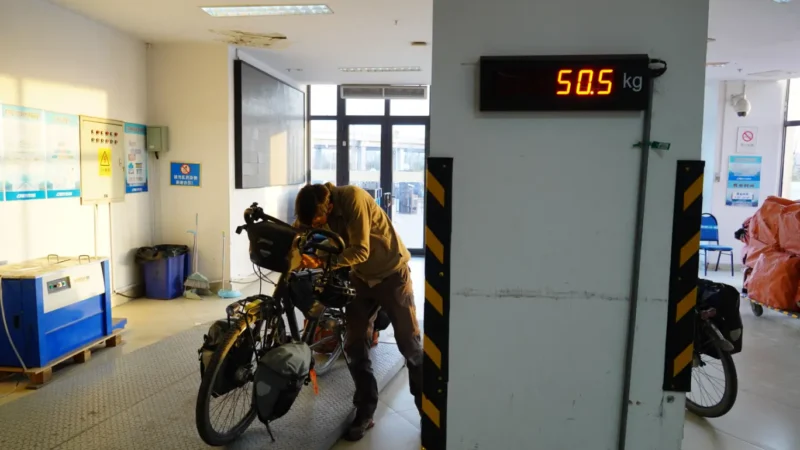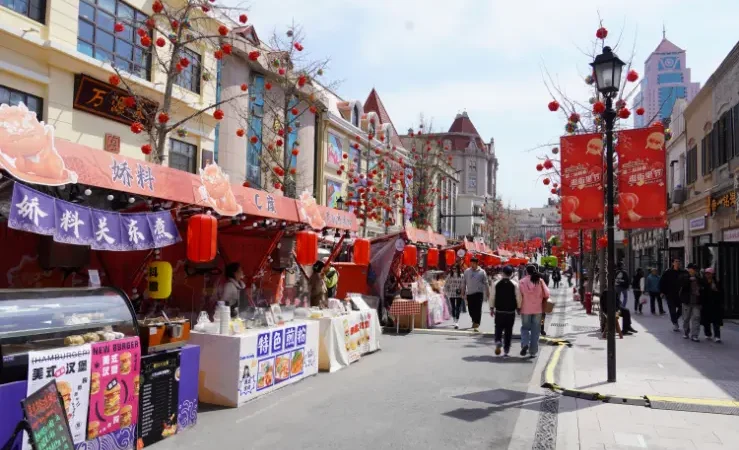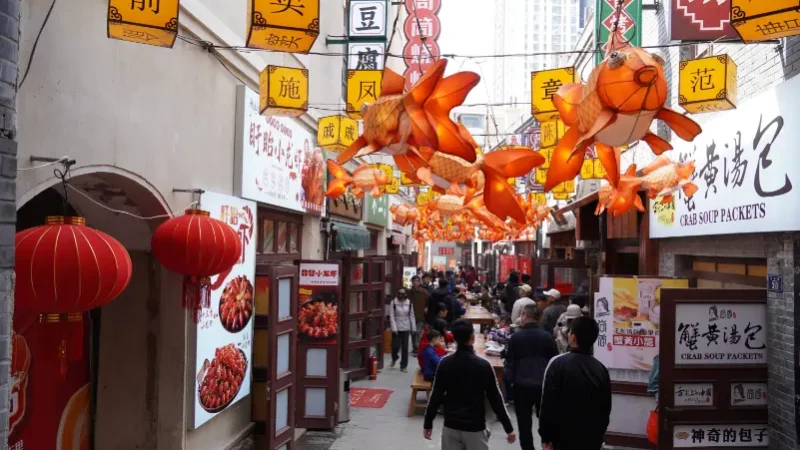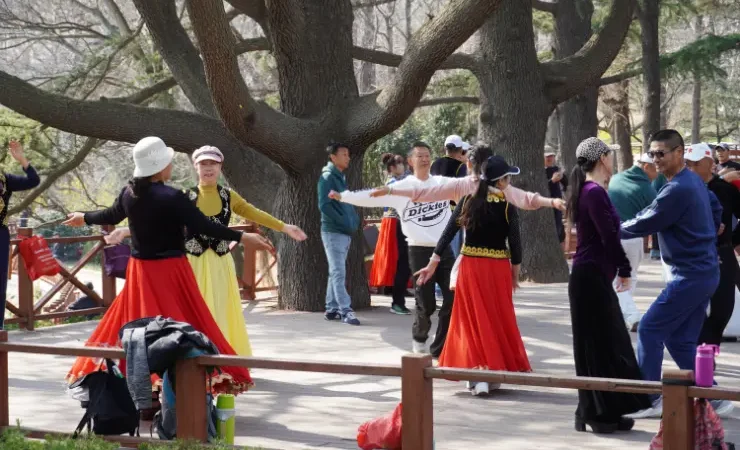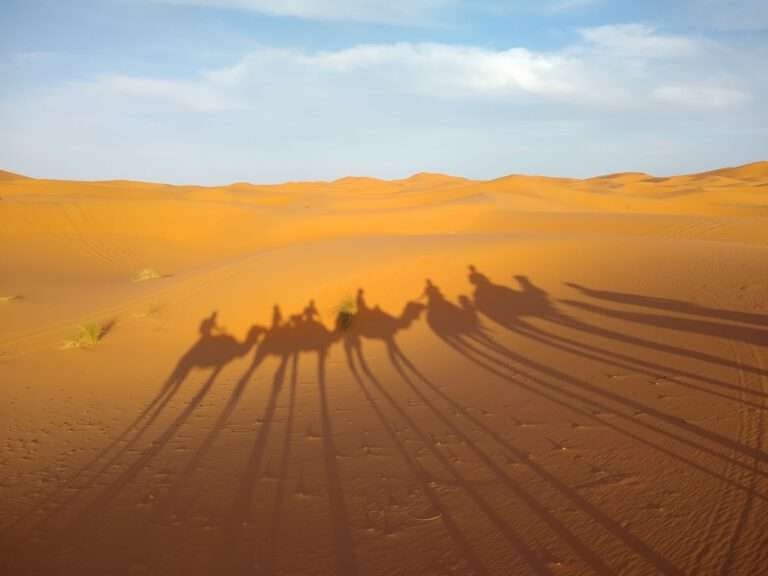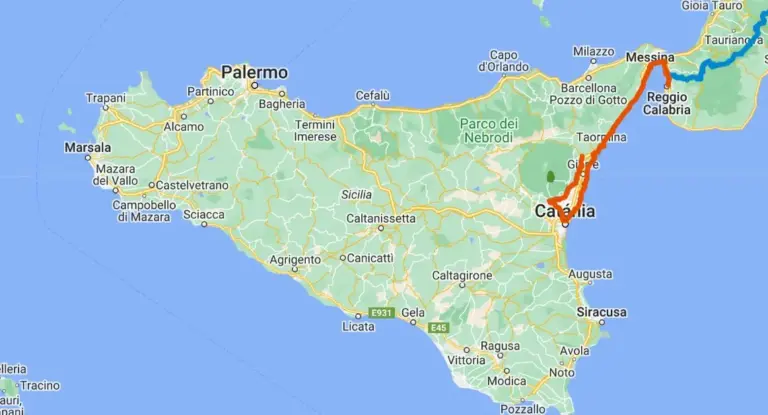Overview day 509 - 523
25 March 2024 - 8 April 2024
0
Km’s Cycled
0
Altimeters
0
Stages
0
Defects
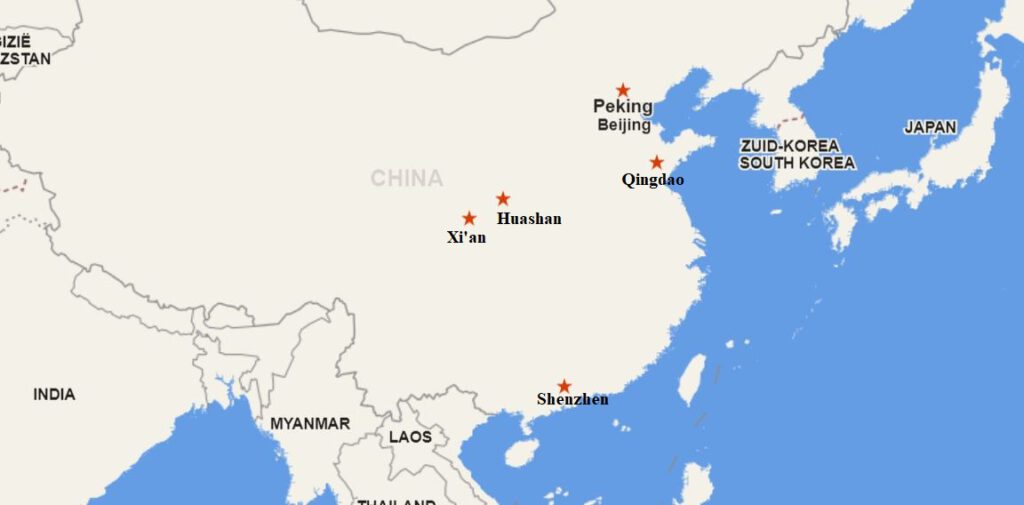
Bullet train
The train ride from Shenzhen to Xi’an takes about 10 hours. But we have nothing to complain about in China’s ultra-modern bullet trains. Plenty of legroom, good seats, time flies and it feels like we are flying too. At over 300 km/h we glide through China like a hot knife through butter. And of course completely according to the timetable. Every 10 minutes on the bullet train is approximately equivalent to one day of cycling. This trip would have taken us about 2 months by bike.
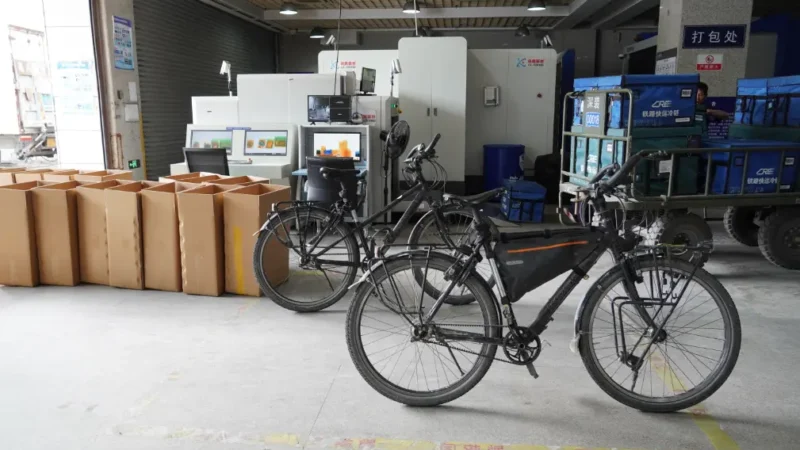
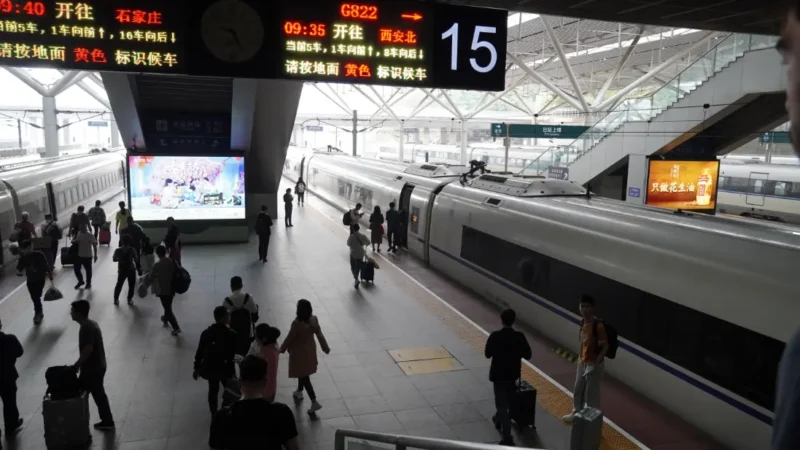
Xi'an
We book two nights so that we have one full day in Xi’an plus the morning on day 2. On our first day we leave Xi’an directly to visit the terracotta army. It is about 2 hours by public transport, so it will keep us busy for most of the day.
Chinese history
In 221 BC, King Zheng managed to unite the seven kingdoms on the great rivers and became the first emperor of China. He calls himself Qin Shi Huangdi. He starts preparing his future grave early, because he believes it will be his palace for eternity. The grave complex is gigantic. Only a small part has been excavated and thousands of life-size terracotta soldiers and bodyguards have been found there. Meant to protect the emperor for all eternity. But it doesn’t stop there. Musicians, charioteers and servants have also been immortalized as statues and have their place in the grave complex. Each statue is unique, probably because real people served as models.
Back to Xi'an
Very impressive and we can only guess what else is hidden underground. After a few hours it is time to make the two-hour trip back to Xi’an. In the evening we wander through the Muslim neighborhood and give ourselves a food tour. Delicious!
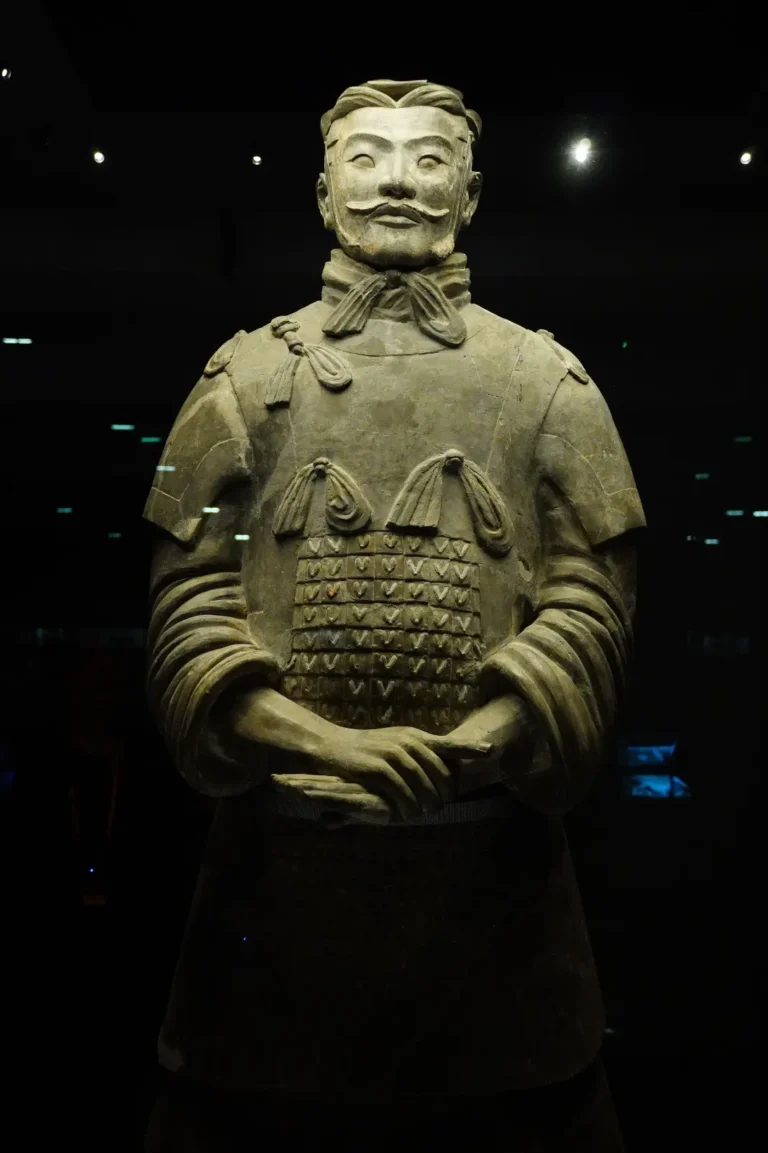
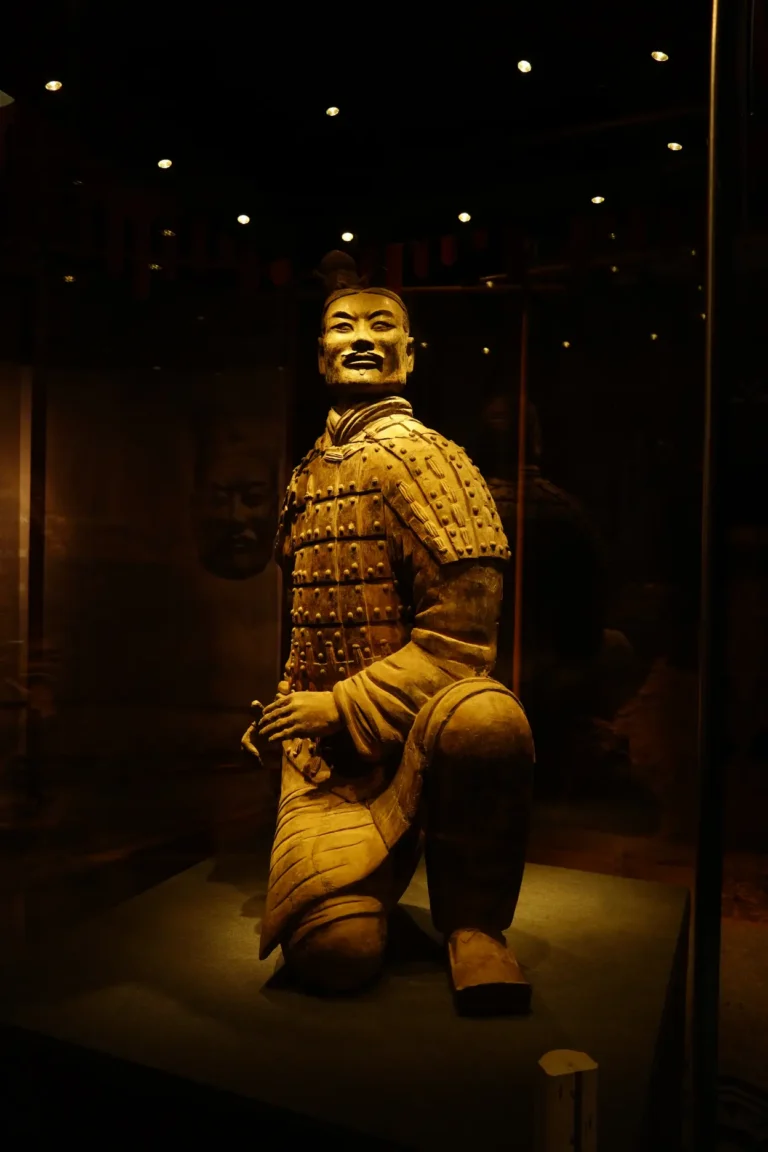
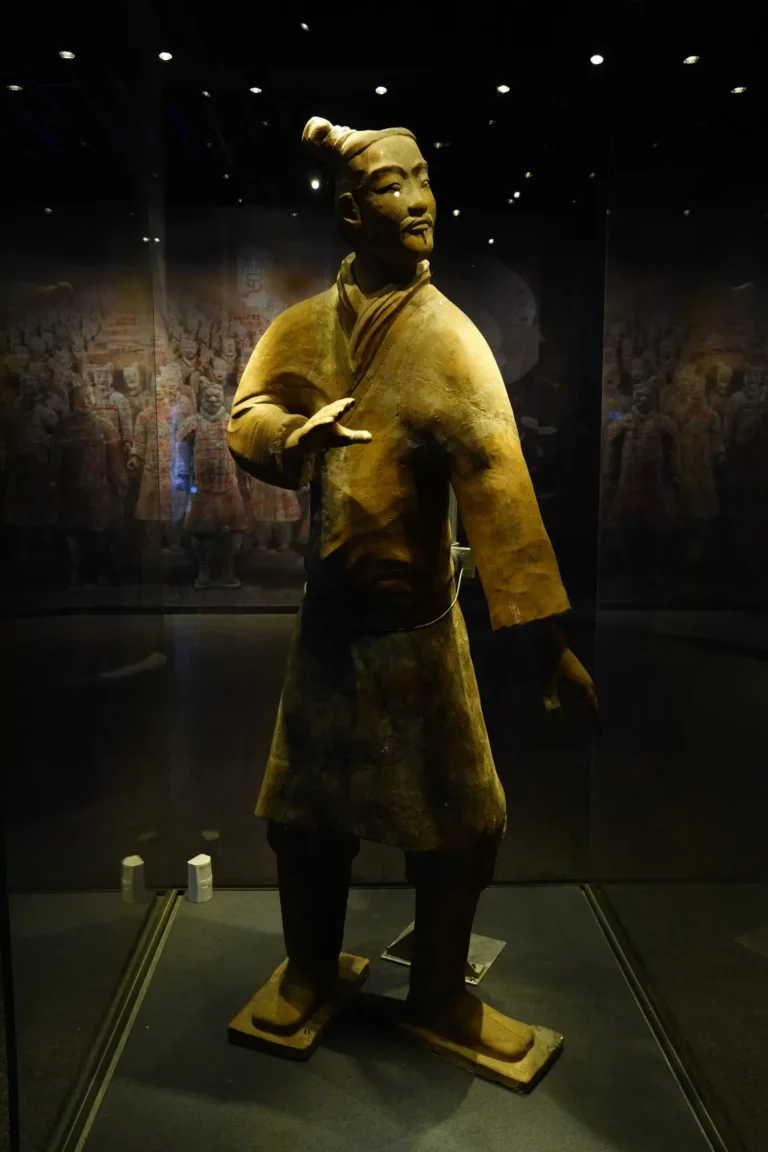
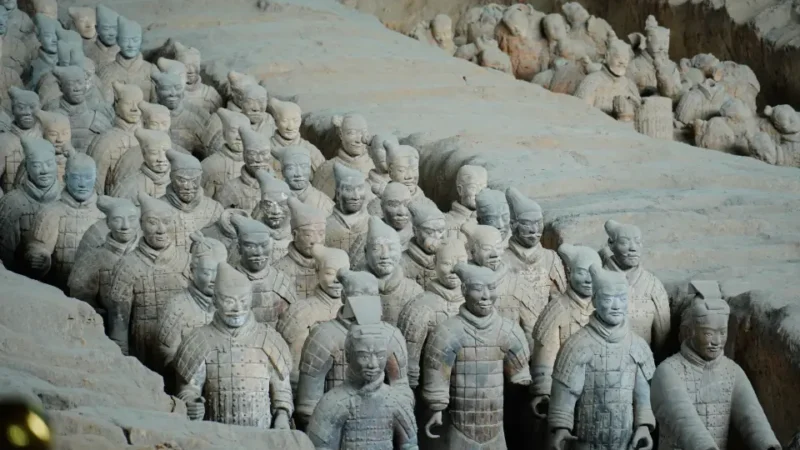

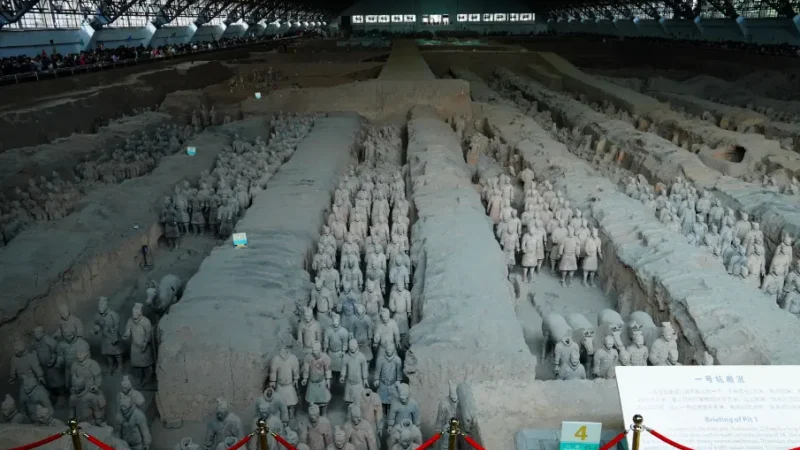
City wall Xi'an
The next day we rent a tandem to cycle over the old city wall of Xi’an. We already miss our bikes so we thought this would be a great idea to ease the pain. However, the tandems that we rented were of significantly lower quality than our own bicycles. First of all because the saddles could not be raised. With our knees up to our chins (okay, a bit exaggerated) we pedal along for 14 km. We had a great time on our children’s-size-tandem. The city wall is 18m wide and 12m high, so from the wall you have a beautiful view of the city. It is also the oldest, best preserved city wall in the world. At least that’s what they say here. Many people go around the city in traditional clothing and take pictures of themselves. We now know that this is a phenomenon that we will encounter a lot in China.
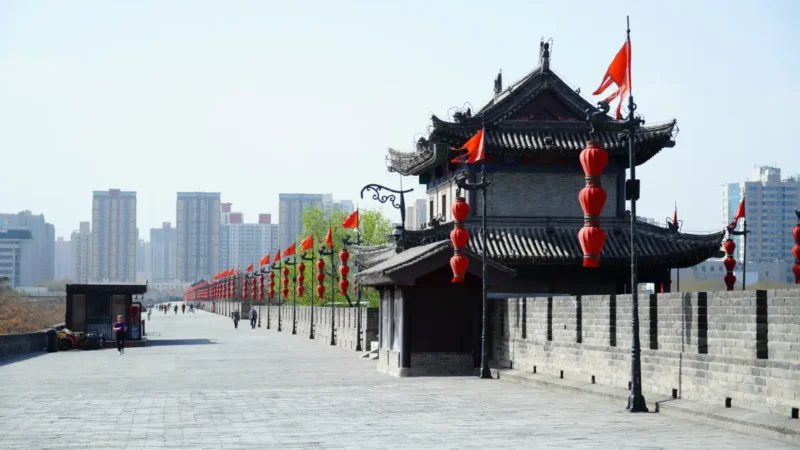
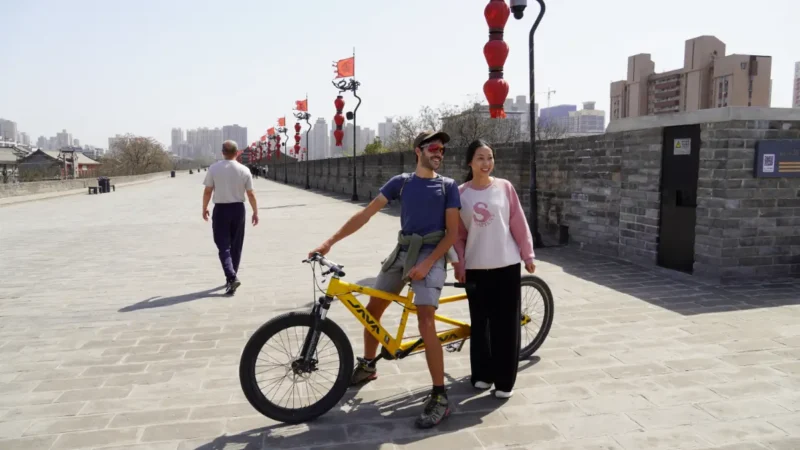
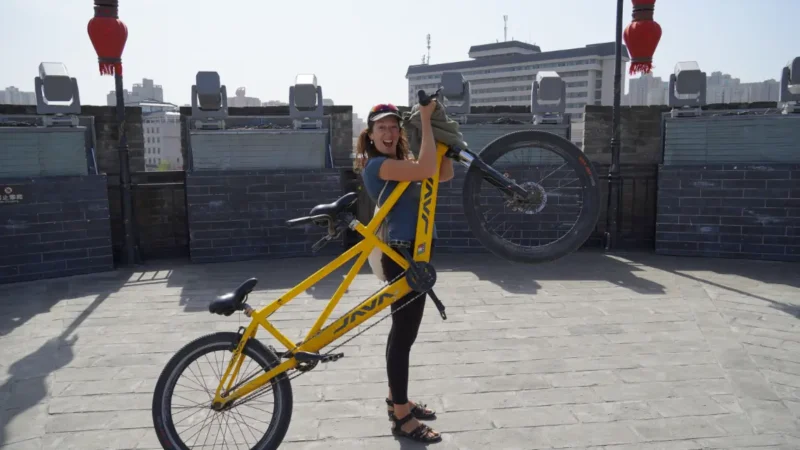
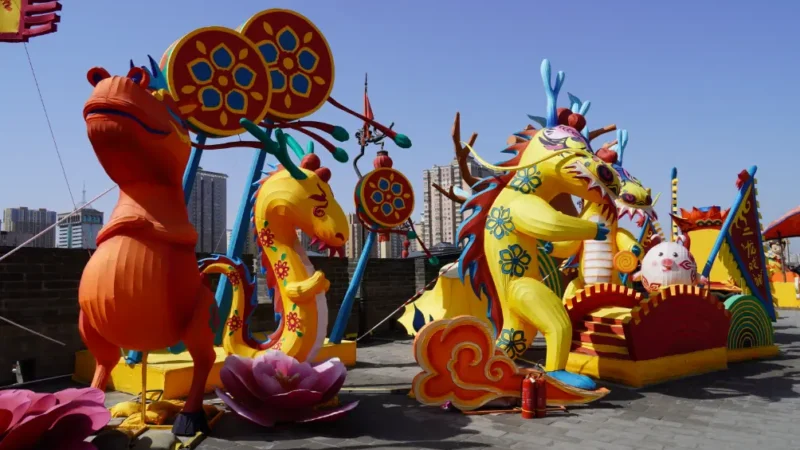
Huashan
After having delivered our children’s tandem back, we head towards the train. This time a short 30 minute drive to Huashan. We want to walk “the most dangerous hike” in the world. That sounds quite intense, but the hike is also called “plank walk”. Which already sounds less thrilling. How “dangerous” that walk really is remains to be seen. In any case, the name attracts many visitors to the area. Including ourselves.
The mountain range where the plank walk is located is very beautiful in itself, even if you do not walk on those planks. The Chinese are generally slightly allergic to walking, so there are lifts everywhere. This is also the case in Huashan. We prefer to hike instead of the ski lift and walk up the mountain. It won’t surprise you, but it was very quiet on the way up.
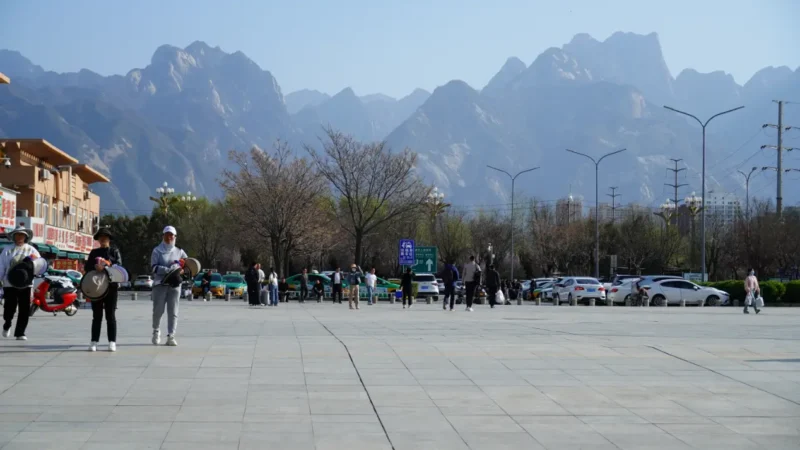
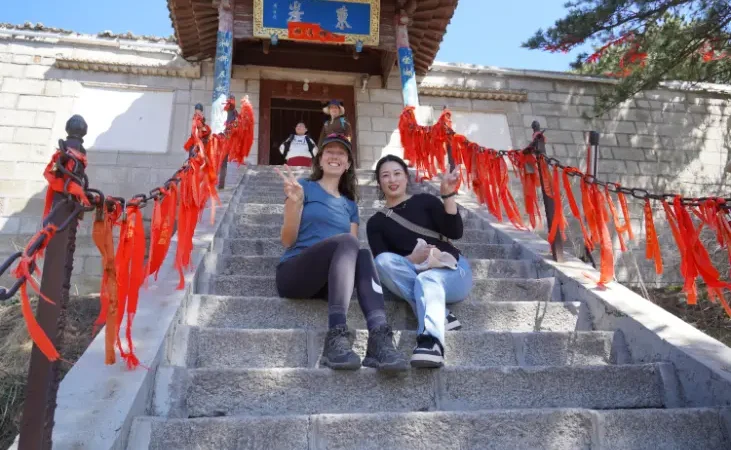
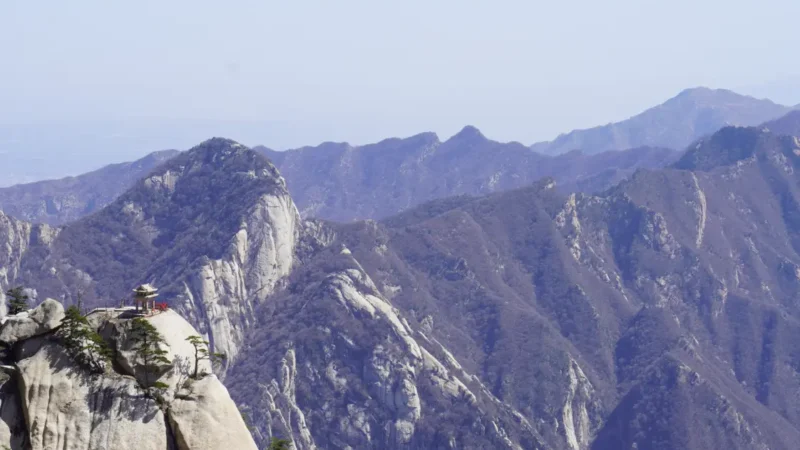
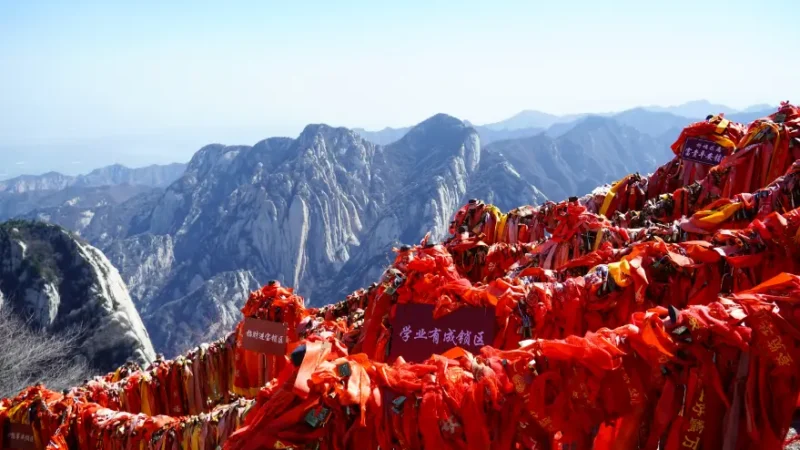
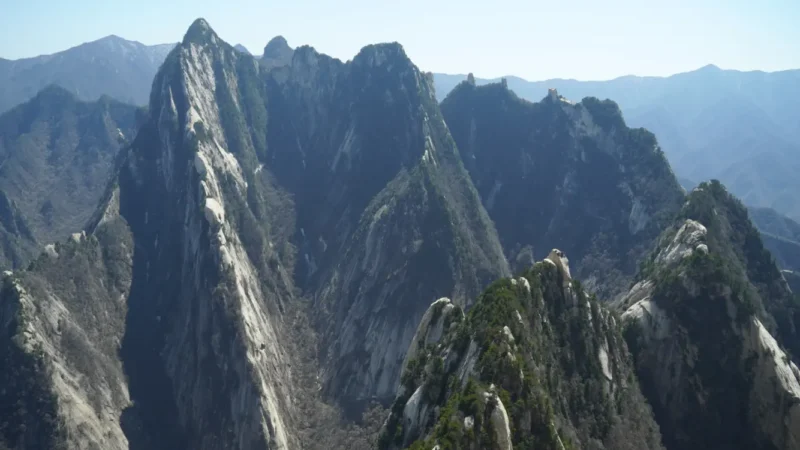
East, South, North, West, China is the best
Once we reach the top, the climbing doesn’t stop. There are 5 peaks that you can climb all. Although you can’t really call it climbing as there are paths and stairs everywhere. We start out at the northernmost peak and the planks are at the southern peak. We reach the southern peak via the eastern peak and climb down the western peak.
Plankwalk
The most dangerous hike in the world lives up to its name mainly because there have been quite a few accidents in the past. Nowadays they have done a lot to improve safety. However, we must sign in advance that we are going onto those boards out of our own free will and, if something unexpectedly goes wrong, we ourselves are responsible and no one else. The form is completely in Chinese, so we don’t understand anything about it, but the meaning is clear. We scribble something that looks like our signature somewhere at the bottom of the paper and the formalities are completed. All we have left to do is to wait 2 hours.
How dangerous is the most dangerous hike in the world?
The plank route is a dead end, so to get back, you have to go back over the same set of planks. Previously they just let everyone do their thing. This meant that a two-way traffic situation arose on the path. People then unclipped themselves from the steel cables to pass the oncoming walker. Of course you were doubly secured, so you weren’t completely loose. The biggest risk was that someone else “helped” you for a while, so that you accidentally (we assume) were not secured on those boards. There you are. On a steep rock wall, on a few planks above an abyss. You can imagine where the name “most dangerous hike in the world” came from.
Improvements
Well, you can also imagine that they no longer allow that. One group goes onto the boards, everyone goes to the end point and you go back as a group. There is no way you can unclip yourself during the entire walk. That means waiting longer, but you are also certain that you will not fall into eternity. Still a nice thought.
Back to Huashan. We stand in line for the plank route and after an hour of waiting we receive a lanyard with a number. Then we can walk to an area where you have a bit of a view of the planks, there is a restaurant and toilets. Not a bad place to wait another hour. And with our numbers we are now assured of a place.
There we go!
After 2 hours we can go on the boards. We are put into harnesses and attached to a steel cable. As already mentioned, the system is designed in such a way that it is impossible to unclip yourself, that will only be possible when we return. We actually already knew that Isabelle has no fear whatsoever when it comes to these kinds of things, Rob suffers more from “healthy tension”. Once on the planks, that disappears immediately. It is incredibly beautiful and we are enjoying it! It was more than worth the two hour wait.
After the plank walk we walk to the western peak and take the elevator down. We would never have made it back in time if we walked. Glad those lifts are everywhere.
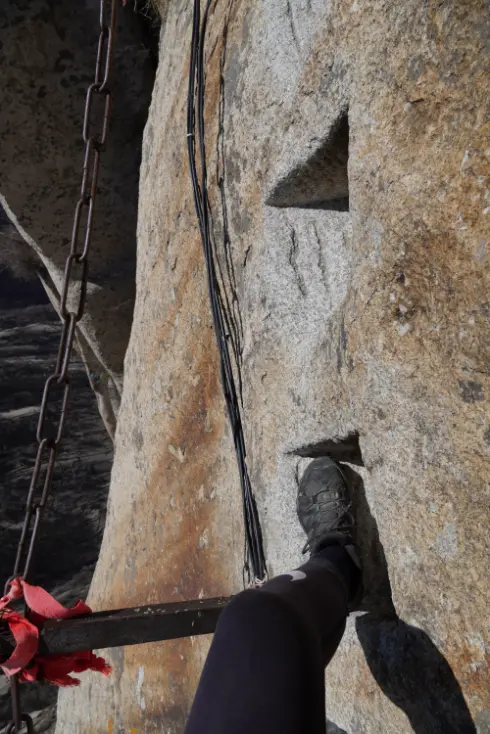
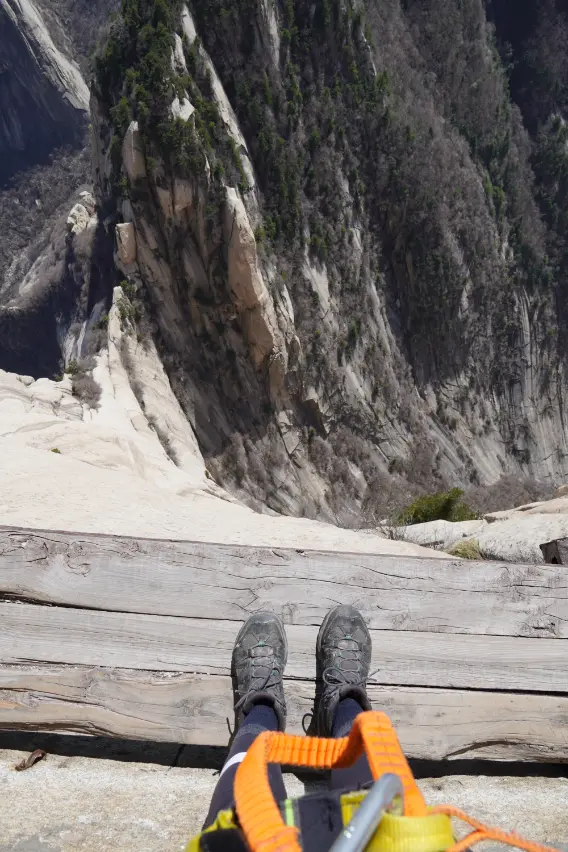
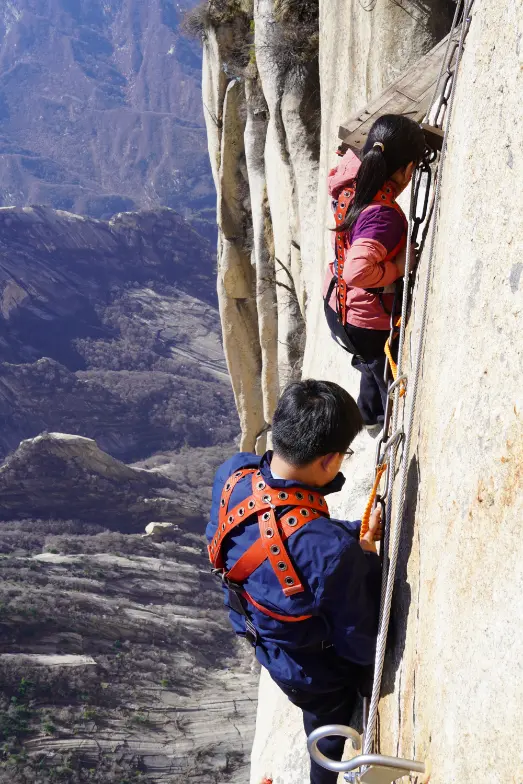

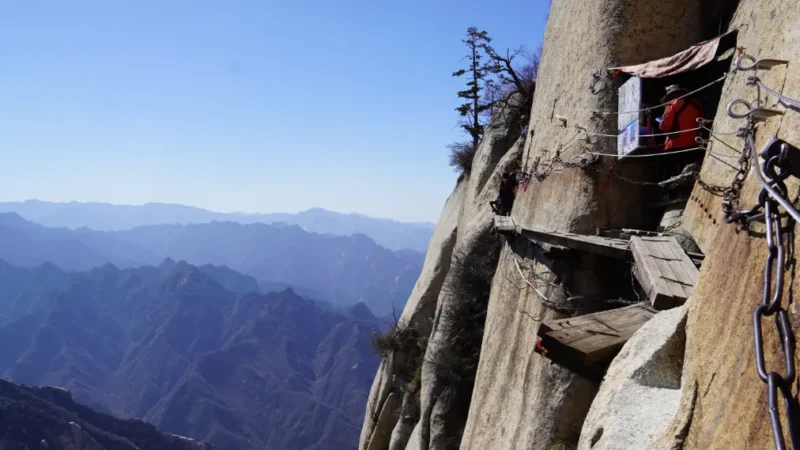
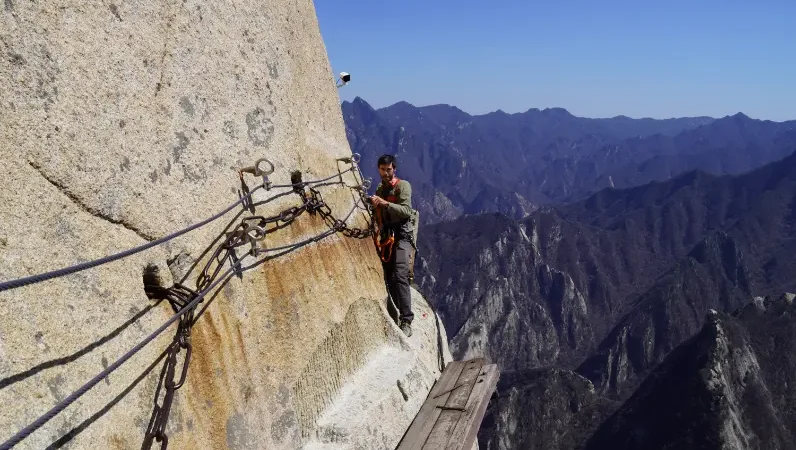
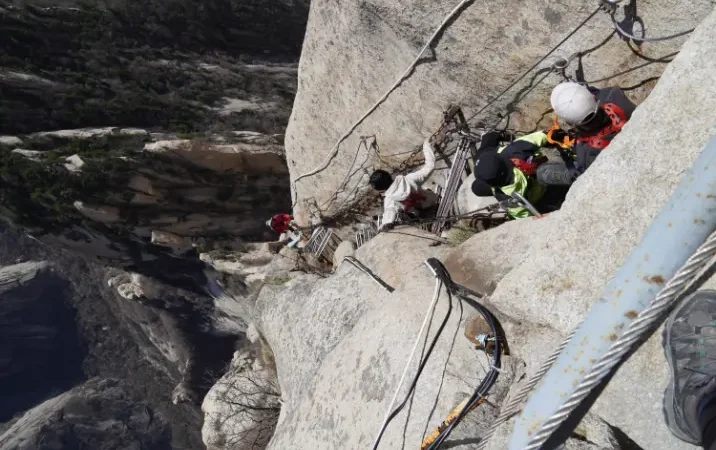
Beijing
The next morning, after breakfast, we head back to the station to catch the train to Beijing. We have already booked a number of tours and entrance tickets in advance because many highlights sell out quickly. So our planning for Beijing is already set.
We start our first day in Beijing relaxed with a coffee and some snacks from the 7-Eleven on the waterfront in the sun. We enjoy the wonderful spring weather. We decide to visit the Summer Palace, a park created by one of the emperors in the north of Beijing. Amy approache us at the subway. “Are you athletes?” At first we don’t understand her, but then the penny drops. No, we are not athletes, but tourists. “Do you think I am fat?” No, of course we don’t think you’re fat. Welcome to China, this is not the first time someone has been so direct.
Summer palace
Amy turns out to be an English teacher at a primary school for children aged 7 to 11 and 5 to 7 years. When she hears that we are going to the summer palace, she asks if she can come along. We have no objection and before we know it, we have a tour guide for the rest of the day, but she is in a bit of a hurry. We have to keep going. It is a large park, and given the beautiful weather and Easter Sunday, it is quite busy. But Amy knows the way and leads us through the park. We learn a few things about Amy and we also learn a little bit of Chinese culture.
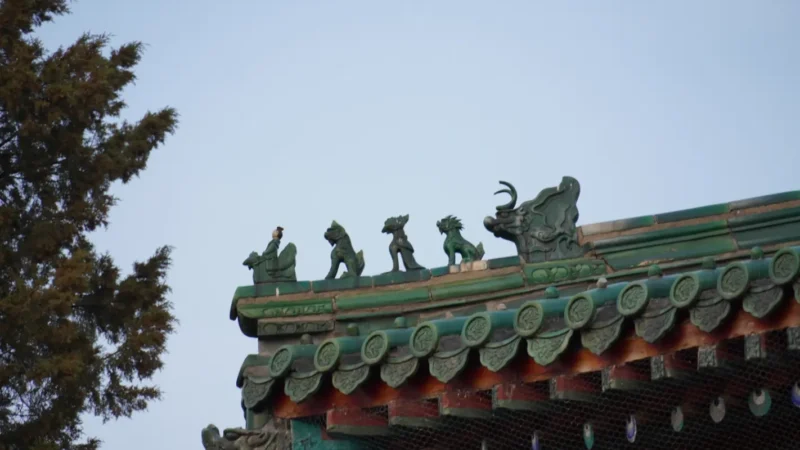
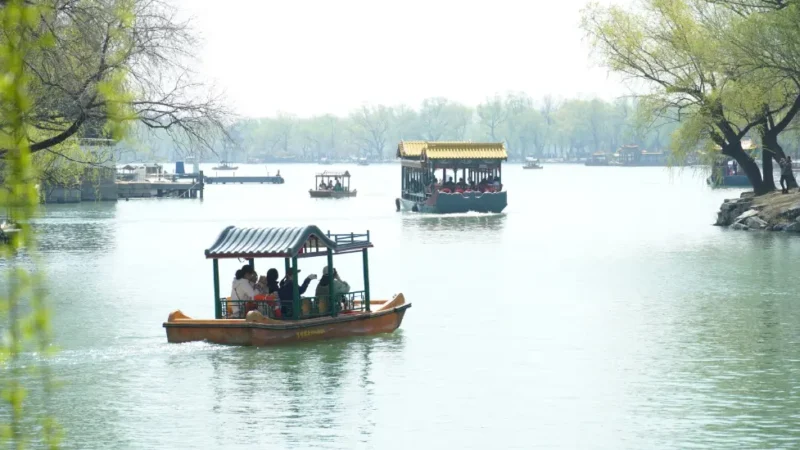
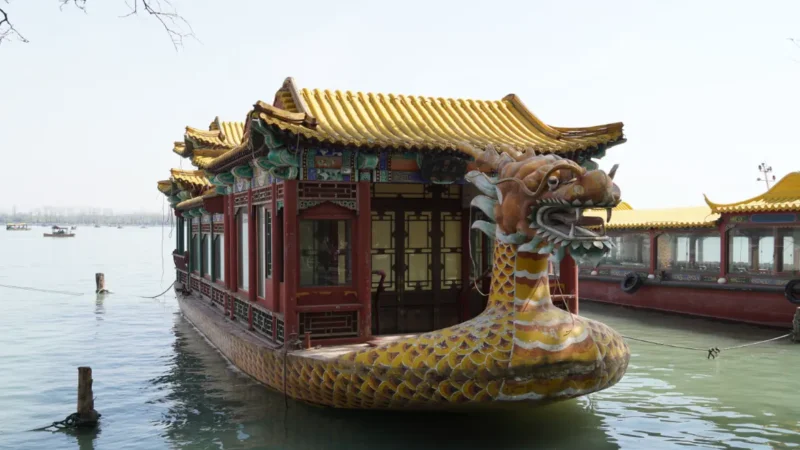


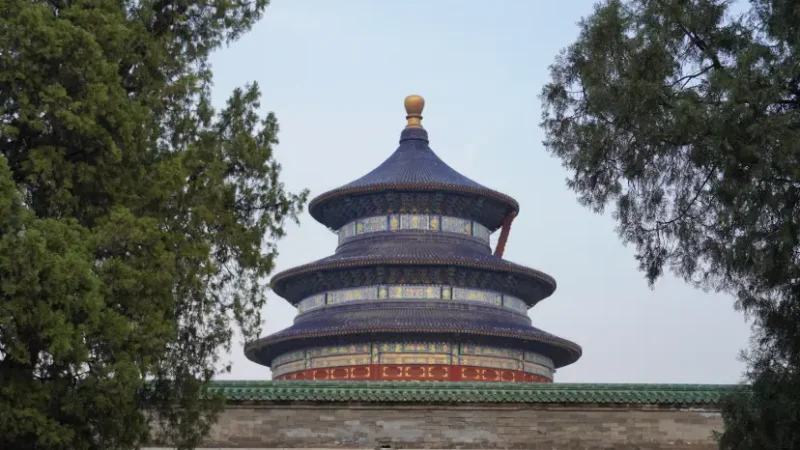
Push forward
After the park, we head back towards where Amy lives and our hotel. Amy takes us to a well-known street with many eateries. Like most Chinese, Amy is already at the front of the queue before you know it. So far we have noticed that the Chinese are very good at pushing forward. A gap in the queue must be filled as quickly as possible, and not necessarily by the person who comes first. This is also the case in the metro. If a spot becomes available, you have to dive towards the chair, otherwise someone else will already be sitting there. But they are mainly surprised that we don’t do that. So we don’t take it personally.
After the delicious food, we say goodbye to Amy and go to the temple of heaven and that’s it for today.
Chinese wall - Mutianyu
The next day we get up early, because we are going to the Great Wall of China. Because the wall is quite outside the city, we booked a tour bus to take us there and back. There are a number of options near the wall. There are gondolas that will take you to the wall if you want. The vast majority of people choose this. Or you can opt for the rarest option: walking. We are still advised against it because it might take 40 minutes to get to the top. Stubborn as we are, we do it anyway. We walk up in +- 10 minutes.
The wall slopes beautifully over the top of the mountains, which means that there are some steep sections. You can walk a total of 6 km, beyond that the wall is not accessible to the public. The views are beautiful and it is very special to be able to walk over such an important piece of history.
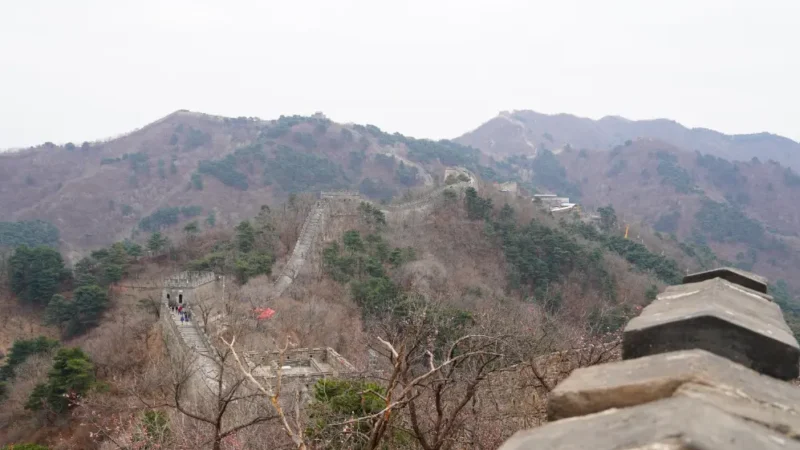
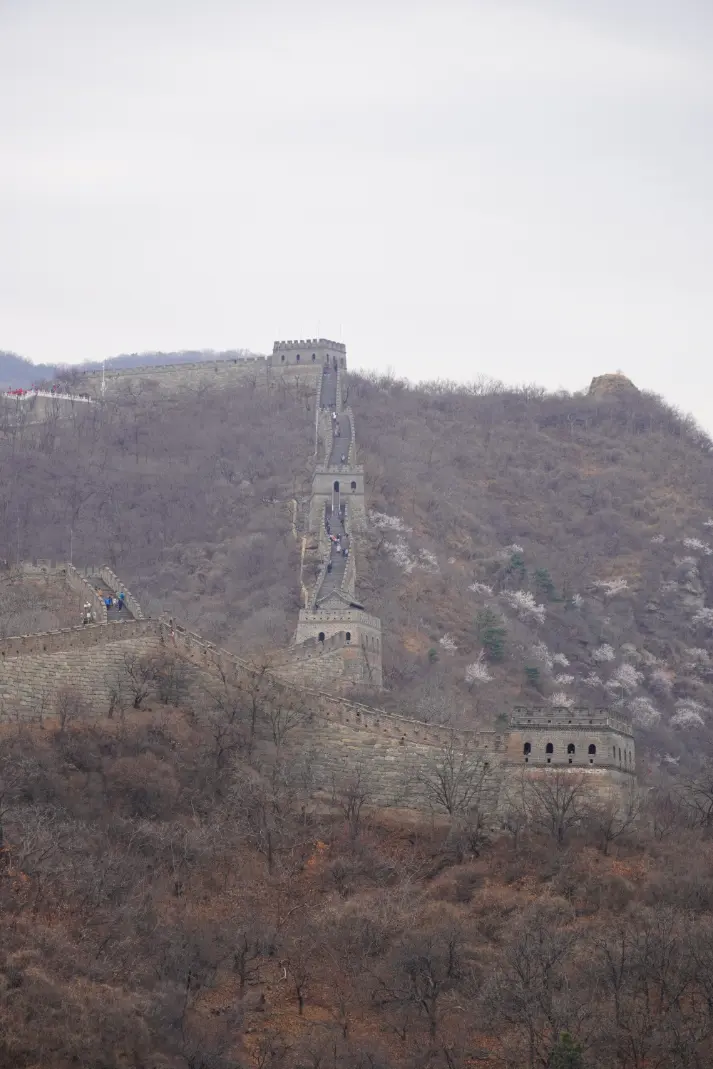
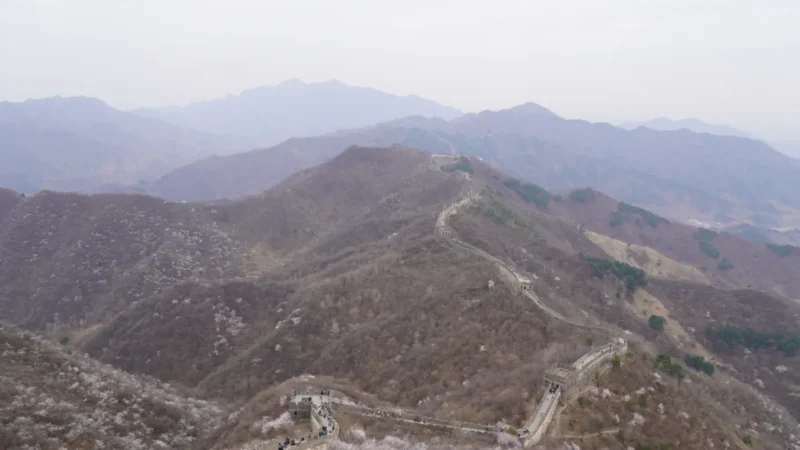
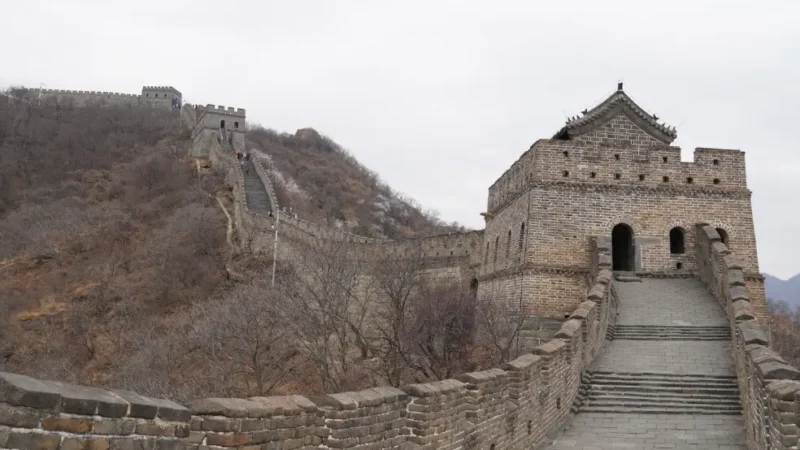
Tiananmen square and the forbidden city
Day 3 we have a tour of Tiananmen Square and the Forbidden City. The explanation is very nice, because otherwise you literally walk through a gigantic area with many buildings and we would really have no idea what is what. It is also interesting to hear what happened within the walls of the forbidden city. There was a lot of fear of fire and fear of the emperor being murdered, so many people were murdered by each emperor himself. The tour lasts 4 hours, which is actually too short for the size of the site, but for our concentration and hunger, actually a bit too long. When we get to the end of the tour, we quickly look for food. We can function better on a full stomach. Then we climb up the hill behind the forbidden city to have a nice view of the site. It’s crazy how big it is.
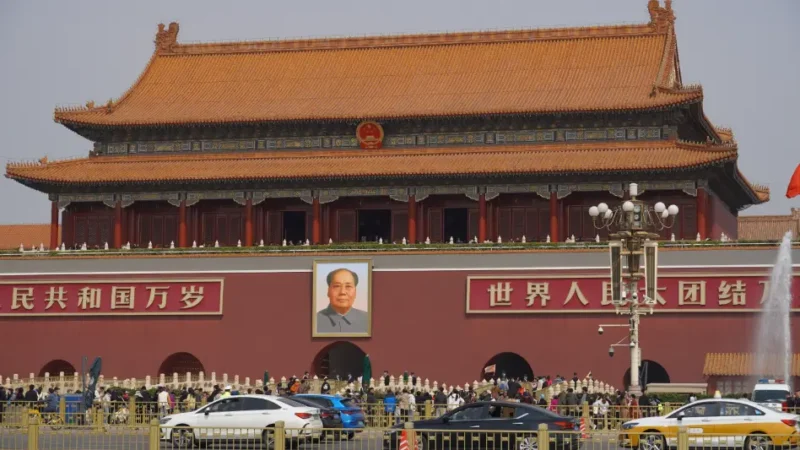
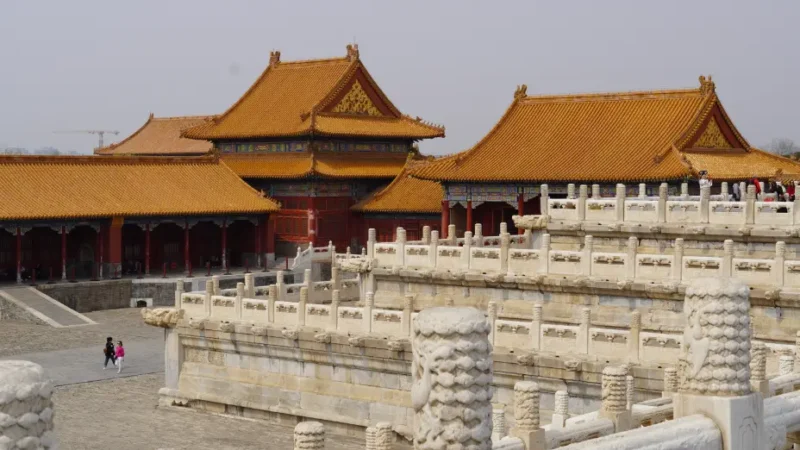
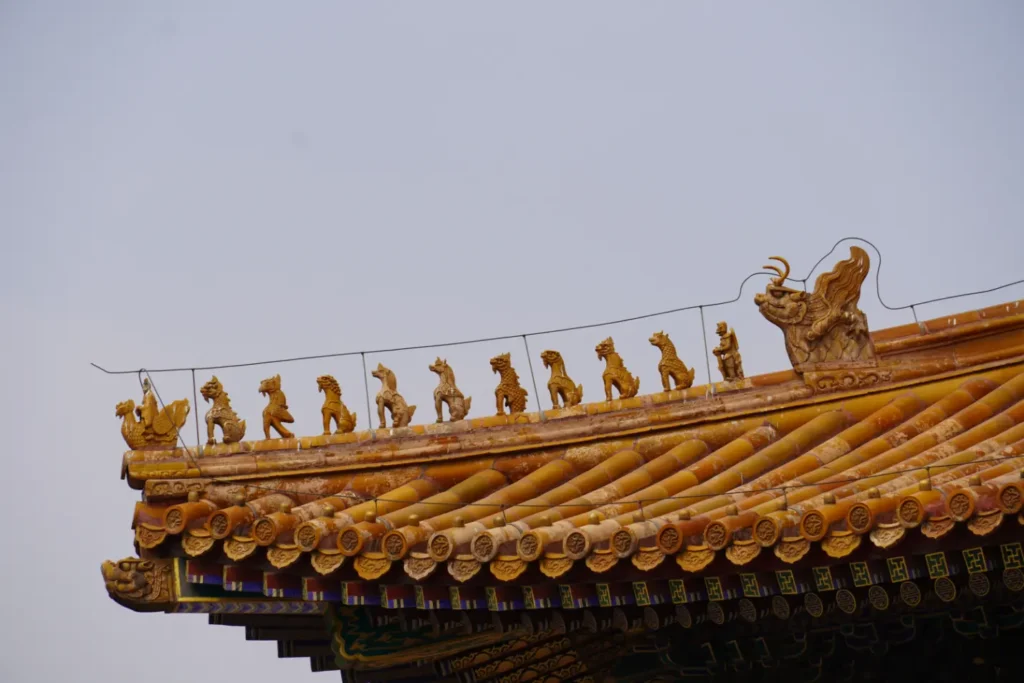
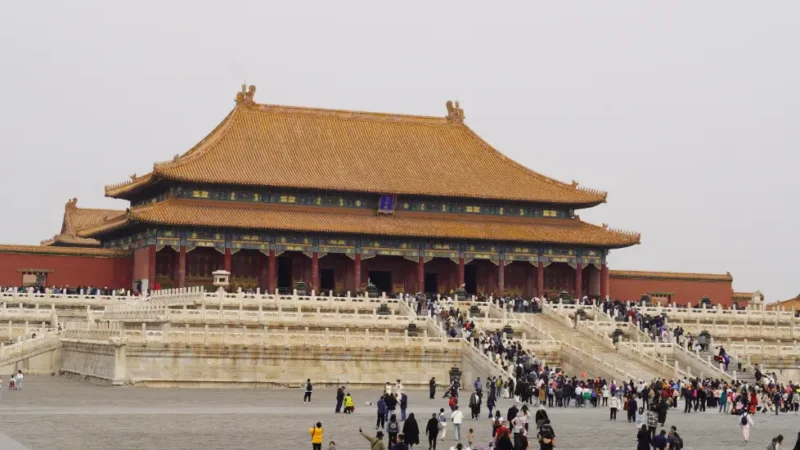
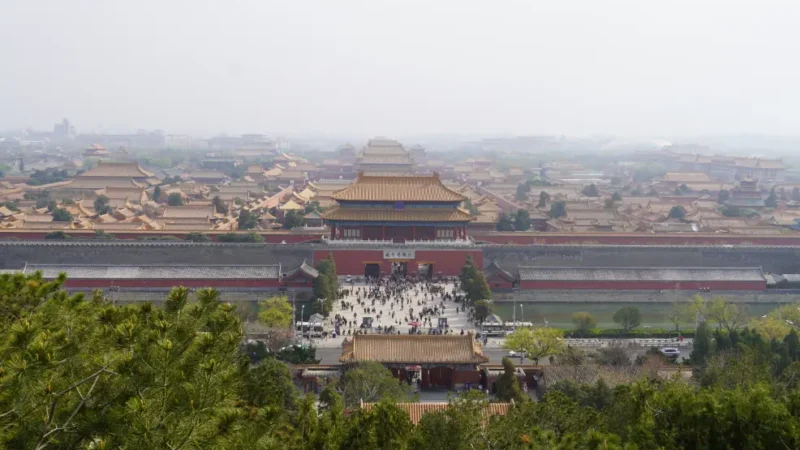
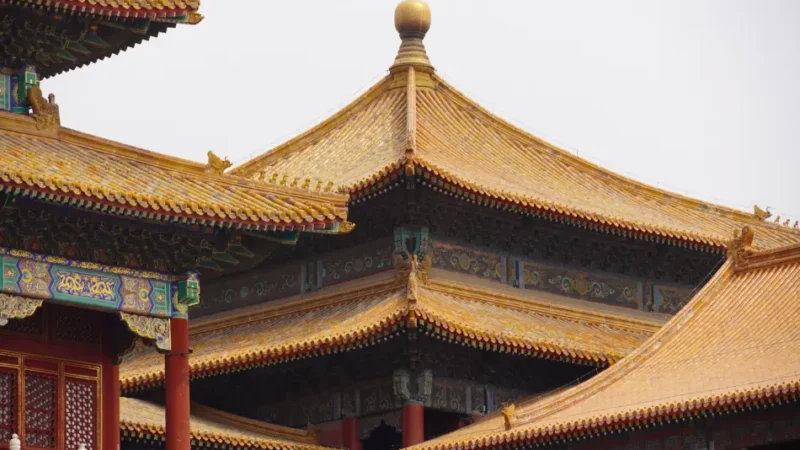
Last day Beijing
In our opinion, we have now seen the most important sights we wanted to visit in Beijing and we decide to spend our last day in a cafe. We are already applying for jobs, planning our return trip and we have time to put a blog online. Every now and then a day without plans is wonderful.
And then it’s time to pick up our bikes again. After a 5-hour train ride we arrive in Qingdao.
We see this everywhere, people dressing in traditional clothes:

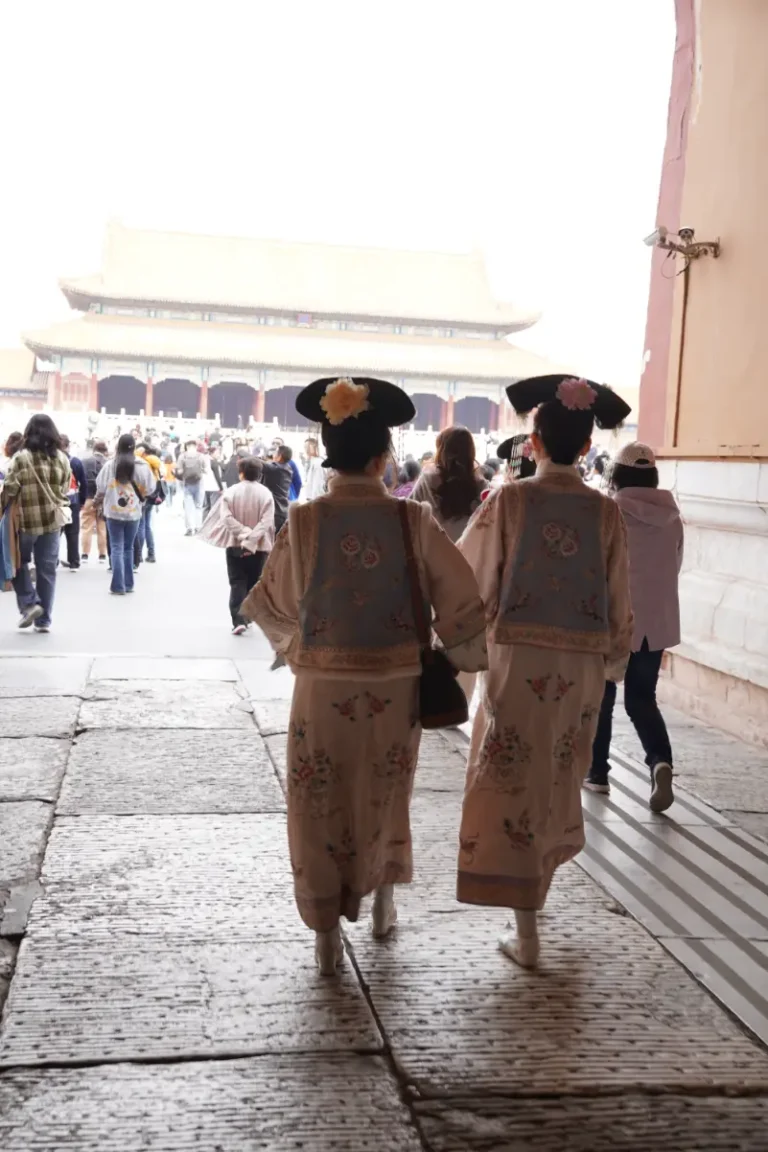
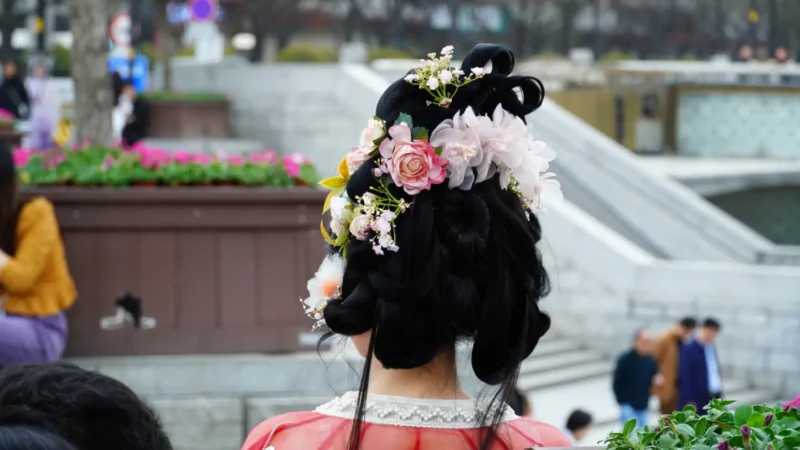
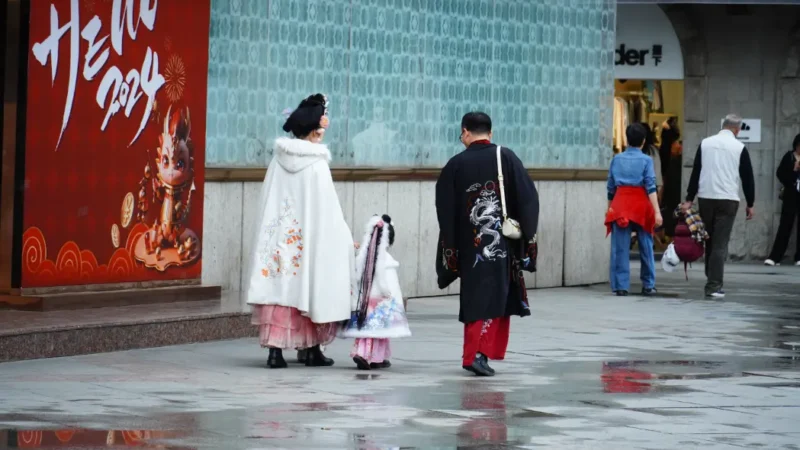
re-united!
We decide to stay in Qingdao for the weekend so that we can spend the full 15 days in China. Now we can, and would like to make use of this. We’re lucky. Some spring festival/fair has been organized in Qingdao. The city is closed off to car traffic and there are many market stalls that serve us the tastiest dishes. And Qingdao is also known for its beer production, so we can’t pass up a few Chinese craftbeers. On April 8th we take the boat to South Korea. After a night of sailing we will arrive on the 9th and then it is time to start pedaling “seriously” again.
Already looking forward to that!
